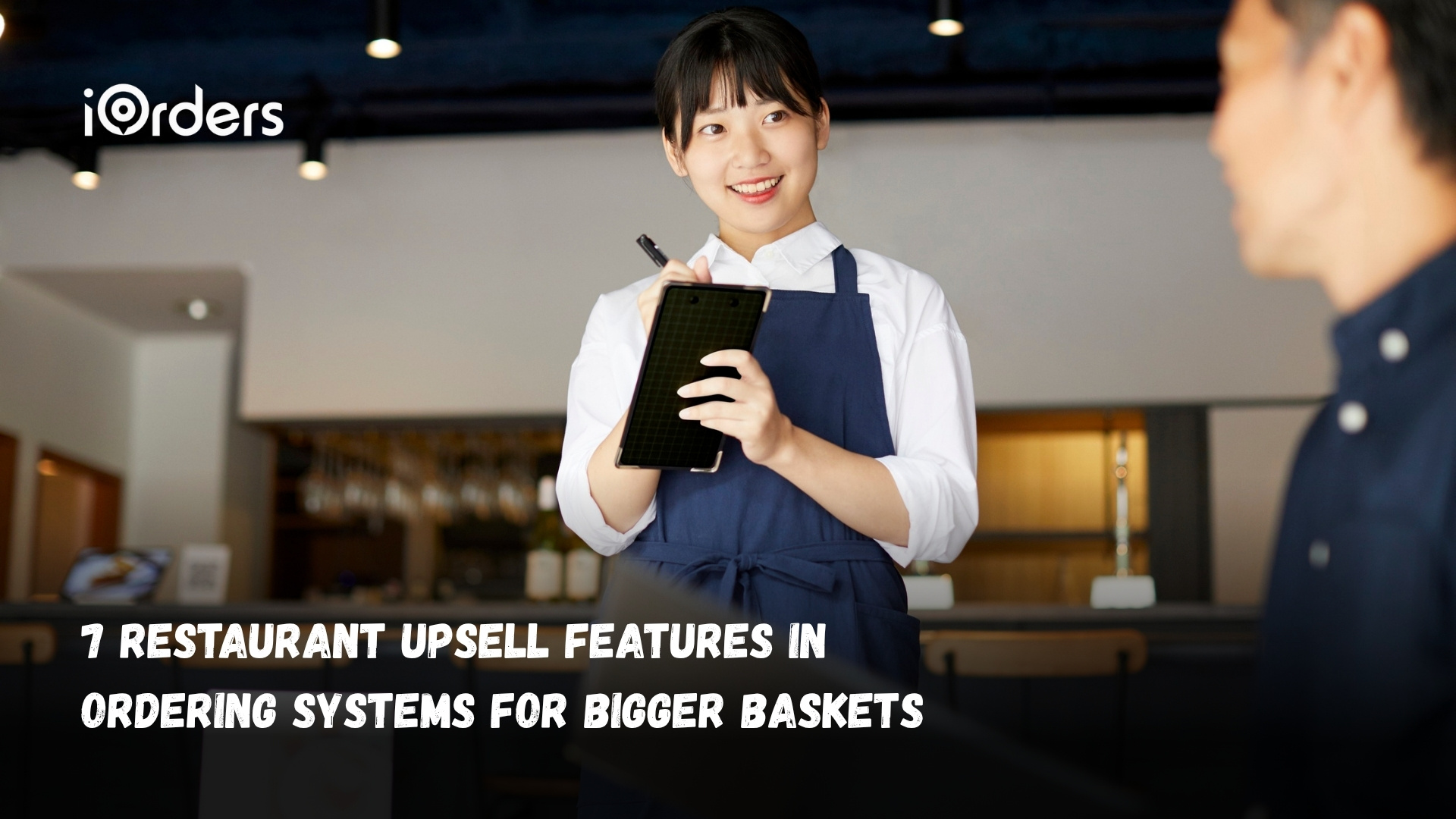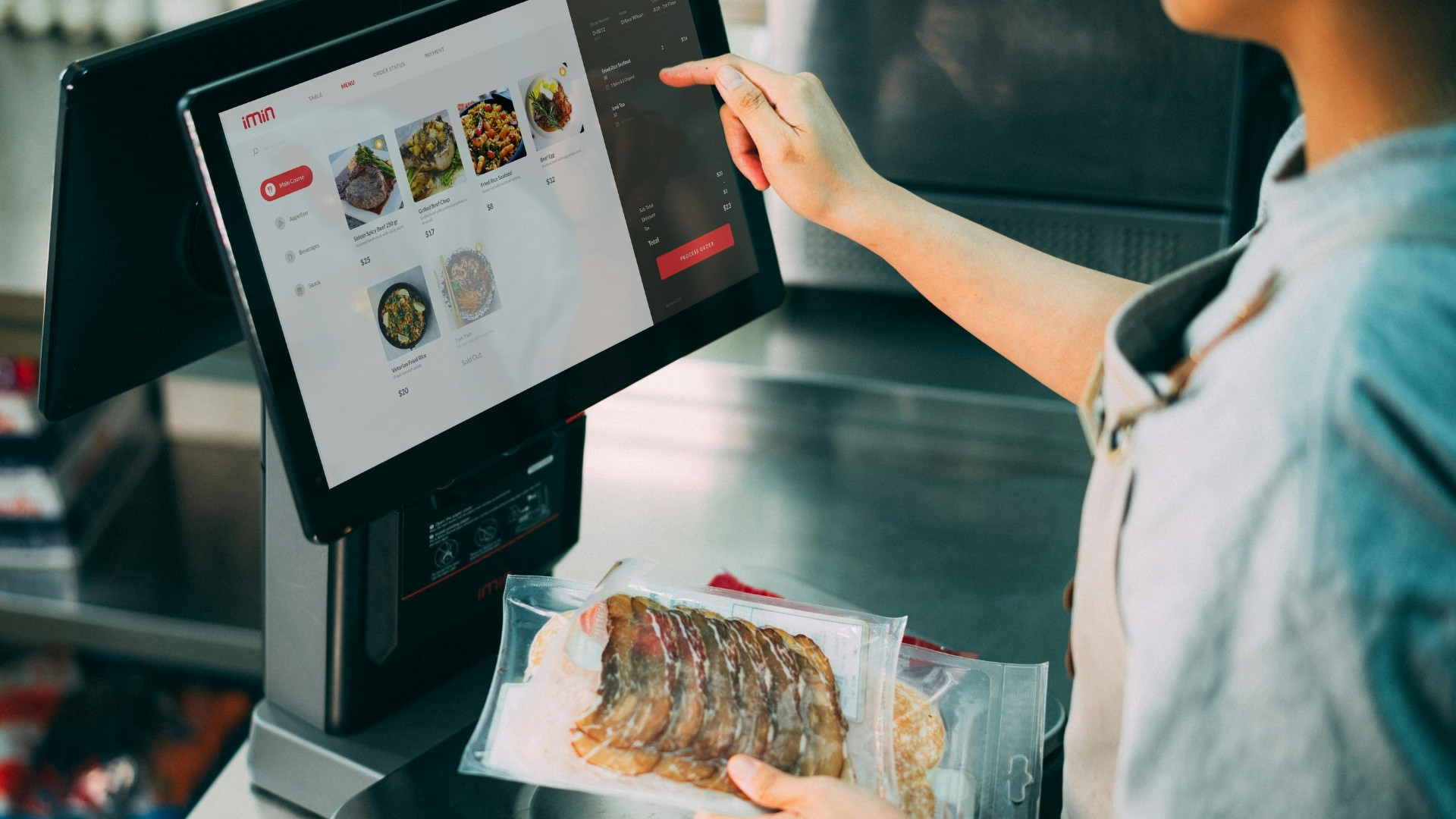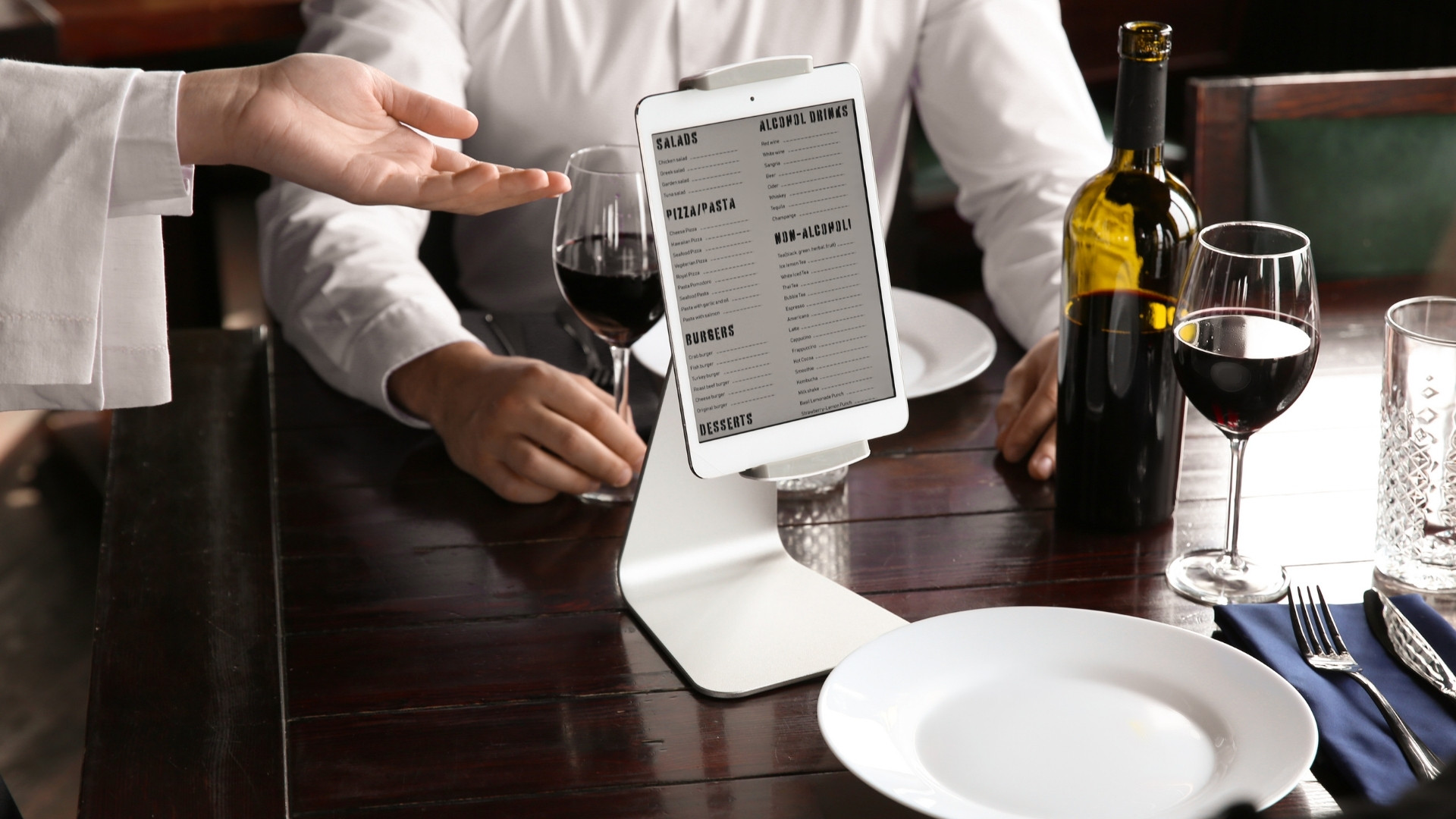October 30, 2025

Getting a customer to place an order is great, but the real win is the size of their order. That extra side, upgraded portion, or last-minute dessert can quietly raise profits without extra marketing or foot traffic.
According to The Restaurant Times, structured upselling programs can lift average order value by up to 30% and overall revenue by 10–15% when implemented effectively. For restaurants operating on tight margins, this represents significant growth from the same customer base.
Modern ordering systems now handle this automatically, suggesting the right add-ons at the right time. Unlike third-party delivery apps that take commissions and customer data, in-house systems help you grow both sales and loyalty on your own terms. In this post, we will break down seven essential restaurant upsell features in ordering systems.
Here's the short version:
Restaurants are under constant pressure to increase margins. Higher costs, tighter budgets, and unpredictable traffic make it harder to stay profitable. That is why every order matters.

Upselling is the art of suggesting additional items or upgrades to customers during their ordering process. It is not about pushing more, but about offering more value.
These are a few ways you can improve average order size:
With modern ordering platforms, these upselling strategies no longer rely on staff prompts. Smart systems analyze customer behavior, automate recommendations, and present them at key moments during the ordering process.
However, not every ordering system is built the same way. You need to look for the right features that drive growth and improve your business. In the next section, we explore seven essential restaurant upsell features for ordering systems.
Suggested Read: How to Make a Small Restaurant Grow: Top 33 Tips
When upsell logic is embedded directly into the ordering flow, restaurants can grow their average order value without adding friction or relying on staff prompts.
Here are seven features that make that possible:
Modifier prompts let you gently nudge your customers to enhance their orders. They pop up right when someone is choosing their items, making it easy to say yes to a small upgrade. These tiny suggestions can have a big impact on your average order value.
Ways you can use modifier prompts:
Domino’s uses modifier prompts throughout its online ordering. When someone selects a pizza, it suggests extras like cheese, specialty crusts, or dipping sauces. These little prompts make the checkout smarter and increase order totals without feeling pushy.
Smart recommendations help you offer the right items to the right customer at the right time. By analyzing past orders and popular pairings, the system suggests extras that customers are likely to want. This makes upselling feel natural and increases the chances of higher-value orders.
Ways you can use smart recommendations:
Starbucks’ mobile app suggests items based on your past orders. If you usually get a latte, it might recommend a pastry or a seasonal drink to go with it. Ordering systems like iOrders can do the same for your menu, helping you increase the order value automatically while keeping the experience great for your guests.
Timed promotions help you create a sense of urgency that encourages customers to add more to their orders. By offering special deals during specific times, you can drive higher sales when it matters most. These promotions can be simple but highly effective in increasing order value.
Ways you can use timed promotions:
Shake Shack offers time-sensitive promotions, such as the "$1 Soda" deal, exclusively through their app and website. This limited-time offer encourages customers to place orders during specific times, increasing sales during peak hours.
With a system like iOrders, you can set up these promotions directly in your menu, making it easy to push targeted upsells and increase average order value without any extra effort from your staff.
Visuals can sell as much as words. Showing your customers high-quality images of desserts, drinks, or meal upgrades can tempt them to add more to their order. Good visuals make the ordering experience engaging and help customers see value in extras.
Ways you can use visual add-ons:
McDonald’s knows how to tempt you at checkout. Their self-order terminals and app show mouthwatering images of fries, drinks, and desserts right when you are about to pay. The brand saw a 1.9% bump in global comparable sales in Q1 of 2024, marking 13 straight quarters of growth. That kind of consistency doesn’t happen by accident.
Bundling simplifies decision-making for your customers while increasing the total order value. By suggesting meal kits or family packs automatically, you make it easier for your customers to buy more items in one go.
Ways you can use bundling logic:
Panera Bread offers "Family Feast" meal bundles starting at $23, which include a variety of soups, sides, and bread. These bundles simplify decision-making for customers and increase average order value by encouraging larger purchases.
Want to make bundling work for your restaurant? iOrders gives you complete control over your menu. You can add it and change it as you want. Schedule a demo today to learn more.
Helpful Resource: How to Organize Your Restaurant Menu for Maximum Profit
Rewarding repeat customers can drive higher spending while keeping them loyal. Loyalty-driven upsells offer exclusive deals or bonus items for returning customers.
This makes them feel valued and encourages repeat orders.
Ways you can use loyalty-driven upsells:
Starbucks Rewards members receive personalized offers and promotions based on their order history and preferences. This loyalty program not only rewards repeat customers but also encourages them to spend more per visit.
iOrders supports integrated loyalty-driven upsells, allowing you to target repeat customers with special offers that increase order value.
Exit-intent offers capture attention right before the customer completes their order. These last-minute suggestions can encourage one more add-on or upgrade.
Ways you can use exit-intent offers:
Chipotle’s doing this at scale. They use loyalty data to suggest add-ons right before checkout, based on what customers have ordered before. As Chipotle CEO Brian Niccol put it:
“We recently rolled out suggestive upsell on our app at checkout based on data we have on our Rewards members… I believe we are in a multiyear path to commercializing our customer data and insights into more targeted marketing campaigns and improving the overall digital experience that will drive increased frequency and spend over time.”
If you are not using exit-intent logic in your ordering system, you’re missing a low-effort, high-impact way to grow every basket.
These upselling features are powerful, but they only work if your ordering system actually supports them. Knowing what’s possible is one thing; choosing a platform that lets you control the experience, customize the flow, and own the data is what really drives results. Let’s look at what to prioritize when picking an ordering system built for growth.
Suggested Read: Best Food Delivery Services with Lowest Fees for Restaurants
Choosing the right ordering system can feel overwhelming, but it doesn’t have to be. The best system is one that helps you increase order value, retain customers, and simplify operations while fitting your unique menu and workflow.

These are a few features to prioritize when looking at an ordering system:
Selecting a system with these capabilities ensures every order becomes an opportunity to grow revenue. It is also important to consider where your orders come from. That’s why many restaurants are choosing to keep ordering in-house rather than relying on third-party platforms.
Suggested Read: Why Commission-Free Online Ordering Is the Future for Restaurants
Third-party apps might help you get orders in the door, but they come with trade-offs: commissions, limited control, and a customer experience that’s not really yours. If you are serious about growing revenue and building loyalty, owning your ordering system is essential.
Here’s what in-house ordering lets you do that third-party platforms can’t:
In-house ordering gives you the tools to upsell, retain, and grow—on your terms. And when paired with the right features, it turns every order into a revenue opportunity. With iOrders, you can integrate all the upsell features you need and more.
Suggested Read: Top Strategies to Get More Repeat Customers for Restaurants

If you want to grow revenue without giving away a big chunk to third-party platforms, iOrders puts your menu, branding, and customer relationships back in your hands. We can help you increase order value with smart, automated upsells. More than 300 restaurants are already using iOrders, fulfilling over 1 million orders with a 99% satisfaction rate.
Here’s how iOrders helps your restaurant with upselling features:
With iOrders, you can accept orders directly from your website or app without paying third-party commissions. This lets you retain more of every sale while keeping full control over your menu and pricing. Restaurants using this feature have reported significant improvements in overall revenue and margins.
iOrders makes it easy for customers to place orders from your website or by scanning a QR code at your location. This convenience encourages more direct orders and reduces friction, increasing both order volume and customer satisfaction.
Offer delivery using your own team or connect with third-party logistics providers. iOrders routes orders to your POS and notifies your staff, or integrates with delivery partners that charge a flat fee per order. In both cases, your branding stays front and center for a flawless customer experience.
iOrders helps you run data-driven marketing campaigns that engage your customers. Personalized offers and promotions reach the right audience at the right time, increasing repeat orders and customer loyalty.
Integrated loyalty programs reward your repeat customers and incentivize them to spend more. With targeted rewards and referral programs, you can strengthen customer relationships and encourage higher average order values.
iOrders uses data insights to identify opportunities for upselling and customer engagement. By sending timely, personalized offers, you can increase both order frequency and overall customer lifetime value.
The platform’s AI-powered review system allows you to respond quickly to customer feedback while maintaining a consistent brand voice. Positive engagement improves customer satisfaction and can influence repeat orders.
You can offer a fully branded app that allows customers to place dine-in, pickup, or delivery orders effortlessly. This app improves the customer experience, strengthens your brand, and provides a platform to implement upsell strategies directly.
Aiko Tanaka, a restaurant owner, shared:
“The iOrders team built a beautiful website that truly reflects our brand. The integrated ordering system has made it incredibly easy for customers to place orders directly for delivery and takeout.”
And the results speak for themselves. Restaurants using iOrders have seen a 13% increase in average basket size and a 244% jump in monthly orders. This is proof that when you own the platform, every order becomes a chance to upsell, retain, and grow.
Without effective upselling, restaurants leave money on the table with every order. Small add-ons, upgrades, and bundles can quietly improve revenue, but many orders never reach their full potential.
iOrders gives you the tools to maximize every transaction. With integrated loyalty programs, QR code ordering, and a white-label app, you can turn repeat customers into your most valuable advocates. Take control of your revenue and stop paying unnecessary fees to third-party platforms.
Explore iOrders today and start turning every order into a bigger, more profitable one. Schedule your free demo.
Most modern systems, like iOrders, are designed to be intuitive for staff. A short onboarding session and practice with the platform are usually enough to ensure your team can implement upsells effectively without slowing down operations.
Yes. Upselling features such as modifier prompts, smart recommendations, and bundling logic can be applied across dine-in, pickup, and delivery, helping increase average order value in every ordering channel.
When implemented thoughtfully, upselling can enhance the customer experience by offering relevant options rather than pushing unnecessary items. Personalization and timing are key to making it feel natural rather than intrusive.
You can track metrics like average order value, add-on uptake rate, repeat customer purchases, and basket size growth. Most ordering systems provide analytics dashboards that make monitoring these results straightforward.
Absolutely. The right system will integrate features like visual add-ons, smart recommendations, and timed promotions, so customers see relevant suggestions without feeling overwhelmed. Proper design and testing help maintain clarity while maximizing revenue potential.